by Constance Villalvazo, VPAM Student Tutor
Peter Wu’s exhibition Rise of the Fly II, which opened at the Vincent Price Art Museum in 2016, explored changing societal fears and the nature of reconstituted imagery. The artist did this via installation, utilizing both the scores and film stills of Kurt Neumann’s 1958 horror classic The Fly, and its 1986 remake of the same name, directed by David Cronenburg. In the deconstruction and montage of both iterations of The Fly to create his exhibition, the artist demonstrated, “the processes of transformation” (Curating Los Angeles). This transformation can also be seen in the relationship between Vincent Price, star of the original Hollywood production, and that of East Los Angeles College, of which his most significant contribution has led to the very creation of the Vincent Price Art Museum (VPAM).
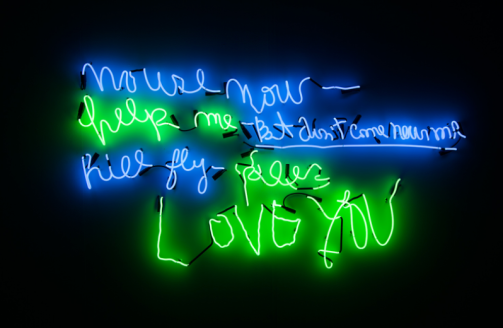
Whether a VPAM guest knows of Vincent Price, the actor, through his prolific work, such as the sinister narrator in Michael Jackson’s “Thriller,” or is hearing his name for the first time, as a student tutor, I can say that the most frequent request I am given is to hear more about him, and his relationship to the museum. What surprises many guests is to learn that the actor pursued a minor in Art History at Yale, and from there, chose to continue his studies in the field at the Courtauld Institute of Art in London, where he discovered theater. Rather than give up one passion for another, Vincent Price later went on to serve on the board of the White House Commission of Fine Arts for both the Kennedy and Johnson administrations, under invitation by former First Lady of the United States, Jacqueline Kennedy Onassis.
But, despite his contributions to VPAM’s ongoing permanent collection exhibition, Form and Function in the Ancient Americas, Vincent Price was not introduced to pre-Columbian or Mesoamerican art until he became acquainted with Earl Stendhal, a Los Angeles art dealer, whose collection was subsequently purchased by the Smithsonian after his death (Vincent Price 496). In his autobiography, Mr. Price states that true knowledge did not come until an interview by Spanish language columnist, Marina Cisternas, on the occasion of Peru’s first World Fair (Vincent Price 496). A misunderstanding took place, whereby the journalist confused him for an expert and arranged for leading specialists to meet him at the airport upon his arrival. Embarrassed, he picked up books on the Nazca and Chimú civilizations for the first time to read on the plane. This was also the first trip, though not the last, during which he purchased from art dealers in Lima, Peru, contributing to a collection of which a few pieces would find their way to East Los Angeles College.
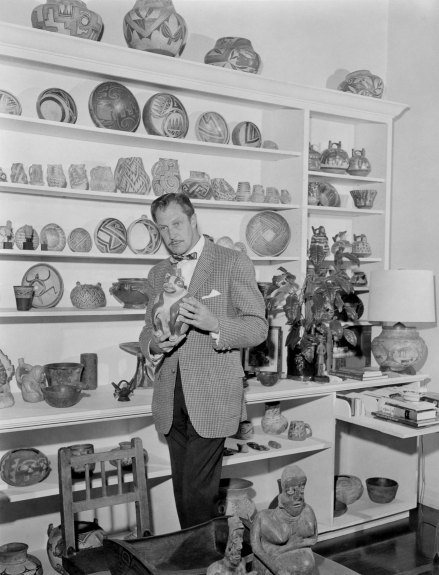
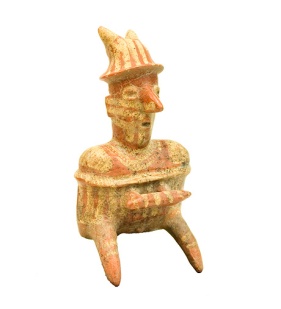
In her biography on his life, Victoria Price writes that her father was the “second most requested [college] speaker in the nation after Eleanor Roosevelt,” which is how he came to be introduced to East Los Angeles College (Victoria Price 744). His inaugural visit in 1951 marked the first of many, as commencement speaker, and then as a classroom guest and even lecturer. Recognizing the underserved nature of the community college, in 1957 he and his wife donated ninety pieces from their personal collection, thus creating the Vincent and Mary Grant Price Art Gallery. Designed as a teaching collection for students to help grant them access to the art world, the gallery was one of the first public galleries dedicated to art in the city, as it predated both the Los Angeles County Museum of Art and UCLA’s Fowler Museum (McDonald).
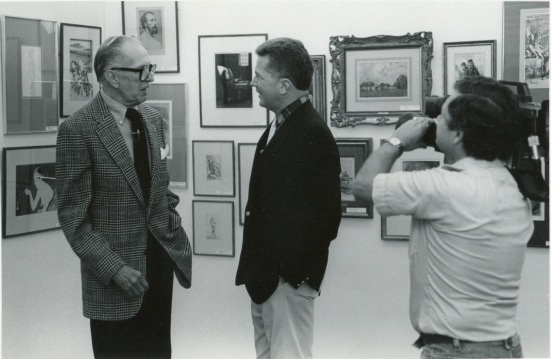
It is from these original ninety pieces that Form and Function in the Ancient Americas have largely been constituted, following the creation of the Vincent Price Art Museum in 2011, with the opening of the Performing and Fine Arts Complex on the East Los Angeles College campus. However, some of the pieces in the actor’s collection had a life of their own, having been featured, along with their owner, in Kahlúa liqueur ads, a brand popularized in America by another collector of Mexican antiquities. Like the ceramics, the original gallery also garnered independent attention. It was the site of a 1990 recorded interview for a planned documentary created and directed by Tim Burton, entitled Conversations With Vincent. The project was ultimately canceled after the actor’s death, and the footage remains unreleased.
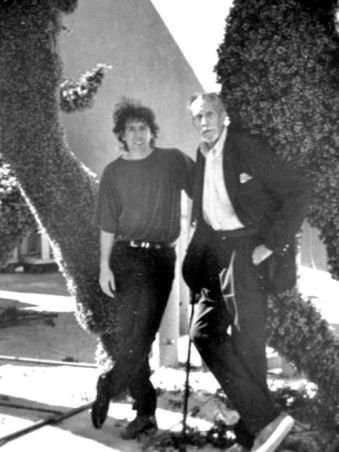
According to Victoria Price, “Art was [Mr. Price’s] religion and museums were his church” (Victoria Price 11). It has the power to engender strong emotion. As VPAM exhibiting artist Peter Wu highlighted, art can be transformative. Like Vincent Price’s own versatility, his pre-Columbian collection has transformed over time from Kahlúa ad to teaching tool. So, too, did his relationship with art, and with East Los Angeles College change and blossom, and this legacy continues to inspire students, faculty, staff, and museum visitors for generations to come.
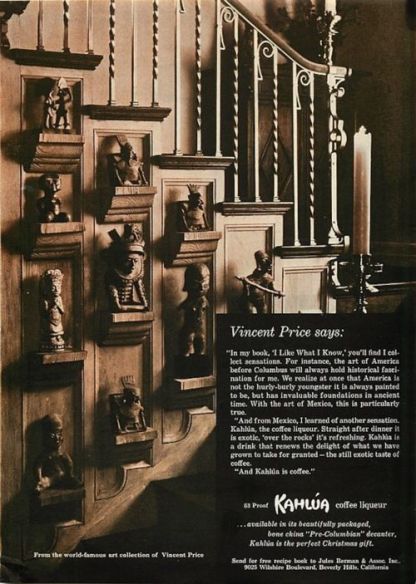
Learn more about VPAM’s Permanent Exhibition, Form and Function in the Ancient Americas here.
Sources Cited
Dambrot, Shana Nys. “Sci-Fi Classic ‘The Fly’ Mutates into a Fine Art Exhibition.” Vice, 7 Mar. 2017, www.vice.com/en_us/article/pgwg4y/peter-wu-the-fly-sci-fi-fine-art-exhibition.
McDonald, Amy Athey. “The ‘King of Horror’ as Arts Advocate: The Vincent Price Papers at Yale.” YaleNews, 19 Sept. 2018, news.yale.edu/2015/10/29/king-horror-arts-advocate-vincent-price-papers-yale.

